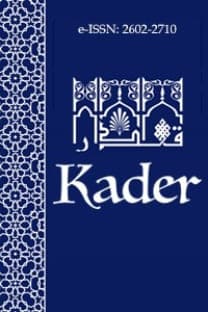TARİHSEL BİR VAKA ÇALIŞMASI: 18. YÜZYIL ANATOMİSİNDE BİR GÖRSEL ALAN OLARAK İNSAN BEDENİ
A HISTORICAL CASE STUDY: HUMAN BODY AS A VISUAL FIELD IN 18TH CENTURY ANATOMY
___
- Arnheim, R. Art and Visual Perception: A Psychology of the Creative Eye. California: UCP, 1974.
- Batirel, H. F. ‚Early Islamic Physicians and Thorax‛. The Annals of Thoracic Surgery 67 no. 2 (1999): 578-580.
- Boff, K. R et. al. (eds.). Handbook of Perception and Human Performance. New York: Wiley, 1986.
- Bulgen, M.. ‚Osmanli Yeni Ilm-i Kelaminda Materyalizm Elestirileri‛, Bilimname XXX, no. 1 (2016): 391-433.
- Cheselden, W. Osteographia, or The anatomy of the bones. By William Cheselden surgeon to Her Majesty; F.R.S. Surgeon to St. Thomas's Hospital, and Member of The Royal Academy of Surgery. London : [s.n.], MDCCXXXIII, 1733.
- Coren, S. Sensation and Perception. Fort Worth TX: Harcourt Brace Colleague Publishers, 1994.
- Ford, B. Images of Science: A History of Scientific Illustrations. London: British Library, 1992.
- Ford, B. Scientific Illustration in the Eighteenth Century, R. Porter (ed) The Cambridge History of Science vol. 4 Eighteenth Century. Cambridge: Cambridge University Press, 2003.
- Grossmann, R. ‚The Philosophical Background of Gestalt Psychology‛. Critica 9 no. 24 (1977): 3-21
- Harrison, B. and Matthew, H. C. G. (eds.). Oxford Dictionary of National Biography. Oxford: Oxford University Press, 2004.
- Israel, J. I. ‘Enlightenment, Radical Enlightenment and the Medical Revolution of the Late Seventeenth and Eighteenth Centuries’, O P Grell (ed) Medicine and Religion in Early Modern Europe. Hampshire: Ashgate, 2007.
- Hartmann, G. W. Gestalt Psychology. New York: The Ronald Press Company, 1935.
- Ibn Sīnā. A treatise on the Canon of medicine of Avicenna, incorporating a translation of the first book. London :Luzac & co., 1930.
- Keskinbora, K. H. et. al. ‚A systematic review of Ibn Sīnā’s studies: reflections on anatomy‛. European Journal of Anatomy 20 no.1, (2016): 99-100.
- Knoeff, R. 'Moral Lessons of Perfection', O P Grell (ed) Medicine and Religion in Early Modern Europe. Hampshire: Ashgate, 2007.
- Norman, J. M. (ed). Morton’s Medical Bibliography: An Annotated Checklist of Texts Illustrating the History of Medicine. 5th edition. Aldershot: Scholar Press, 1991.
- Prioreschi, P. ‚Anatomy in Medieval Islam‛. JISHIM 5 (2006): 2-6.
- Roberts, K. B. The Fabric of the Body. Oxford: Clarendon Press, 1990.
- Setia, A. ‚The Theologico-Scientific Research Program of the Mutakallimun: Intellectual Historical Context and Contemporary Concerns with Special Reference to Fakhr Al-Din Al-Rāzī‛, Islam and Science 3 no.2, (2005): 127-151.
- Shoja, M. M., & Tubbs, R. S. ‚The History of Anatomy in Persia‛. Journal of Anatomy, 210 no.4, (2007), 359–378. http://doi.org/10.1111/j.1469- 7580.2007.00711.
- Slater, A. and Oates, J. ‘Sensation to Perception’, in Oates, J. Grayson A. and Wood C. (eds.) Psychological Development and Early Childhood. Milton Keynes: Open University Press, 2005.
- Stafford, B. M. Body Criticism: Imaging the Unseen in Enlightenment Art and Medicine. Cambridge: MIT Press, 1993.
- Trevsky, B. ‚Visualizing Thought‛. Topics in Cognitive Science 3 no.3, (2010): 499- 535.
- Watt, W. M. The Faith and Practice of Al-Ghazālī. Oxford: One World Publications, 2007
- Yayın Aralığı: 2
- Başlangıç: 2003
- Yayıncı: Mehmet BULĞEN
MU’TEZİLE’DE KALP MÜHÜRLENMESİ VE ÖZGÜRLÜĞÜN SÜREKLİLİĞİ MESELESİ
Tuğba ÖZTÜRK, Hüseyin Sabri ERDEM
A HISTORICAL CASE STUDY: HUMAN BODY AS A VISUAL FIELD IN 18TH CENTURY ANATOMY
BİLİM VE DİN ARASINDAKİ İLİŞKİ NEDİR?
Nefâis, 2003); - v - ilm v -îmân (Beyrut: Dâru’n-Nefâis, 1998); v - ilmî
MÂVERÂÜNNEHİR’DEN OSMANLI COĞRAFYASINA ÜNLÜ TÜRK KELÂMCILARI
Fehmi SOĞUKOĞLU, Ramazan BİÇER
KELAM KONULARINA TASAVVUFÎ YAKLAŞIM: HÂRİS EL- MUHÂSİBÎ’NİN “ER-RİÂYE Lİ HUKÛKİLLÂH” ESERİ ÖRNEĞİ
